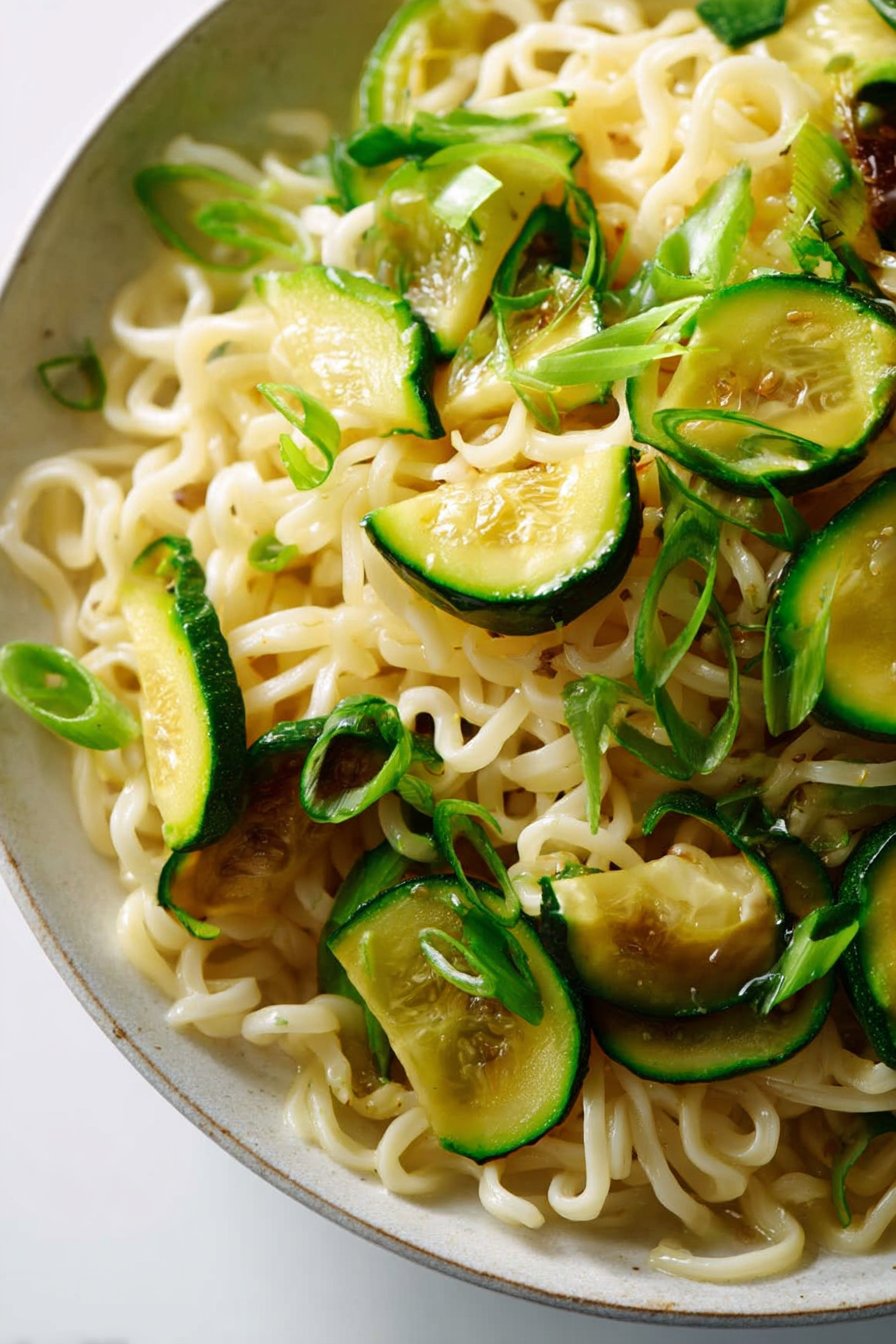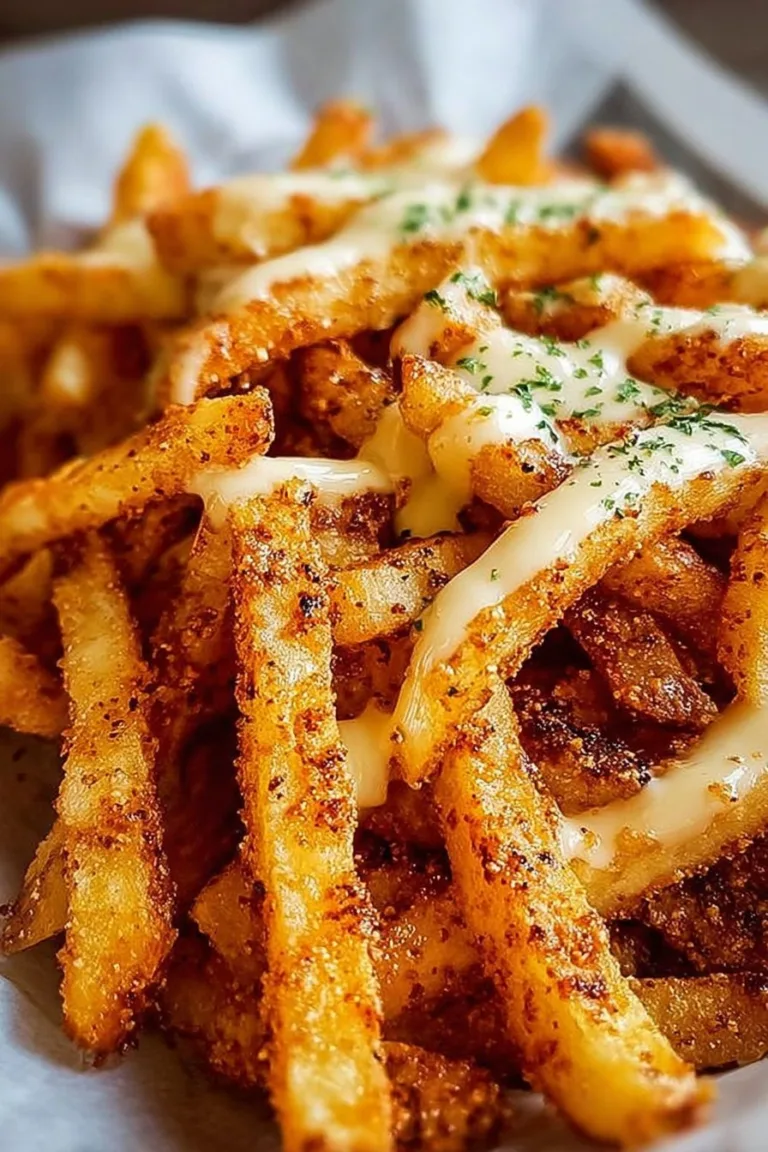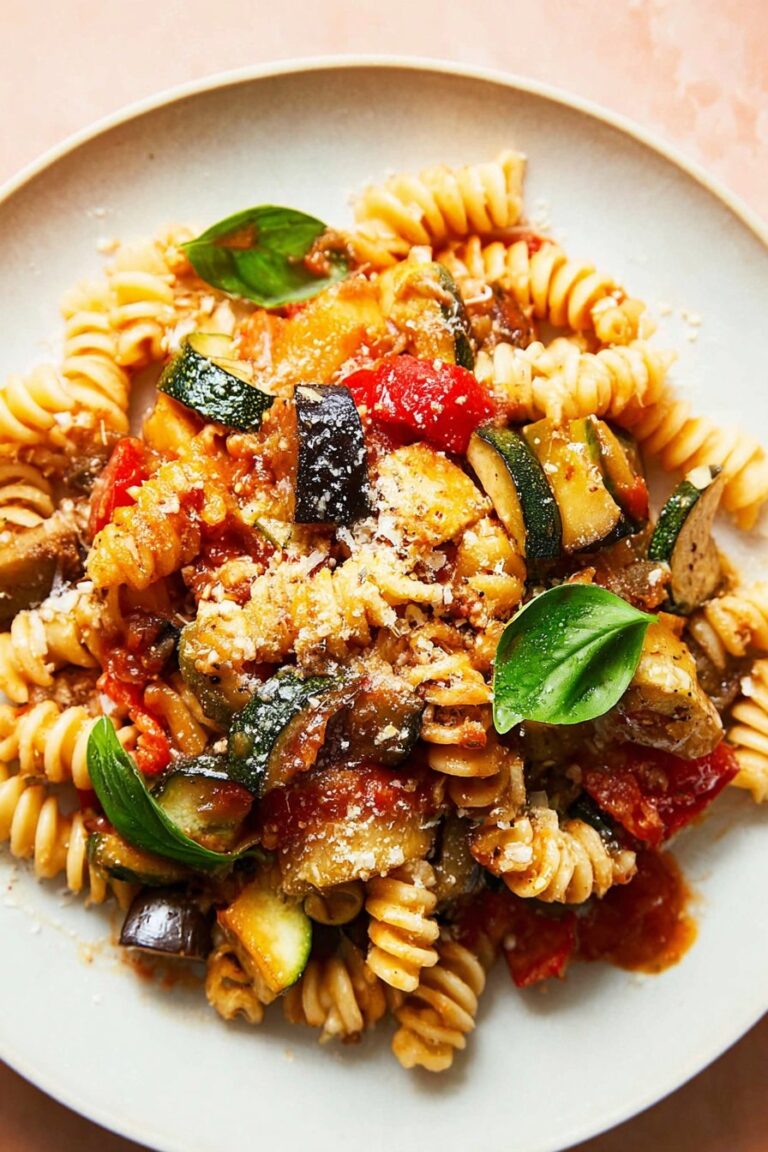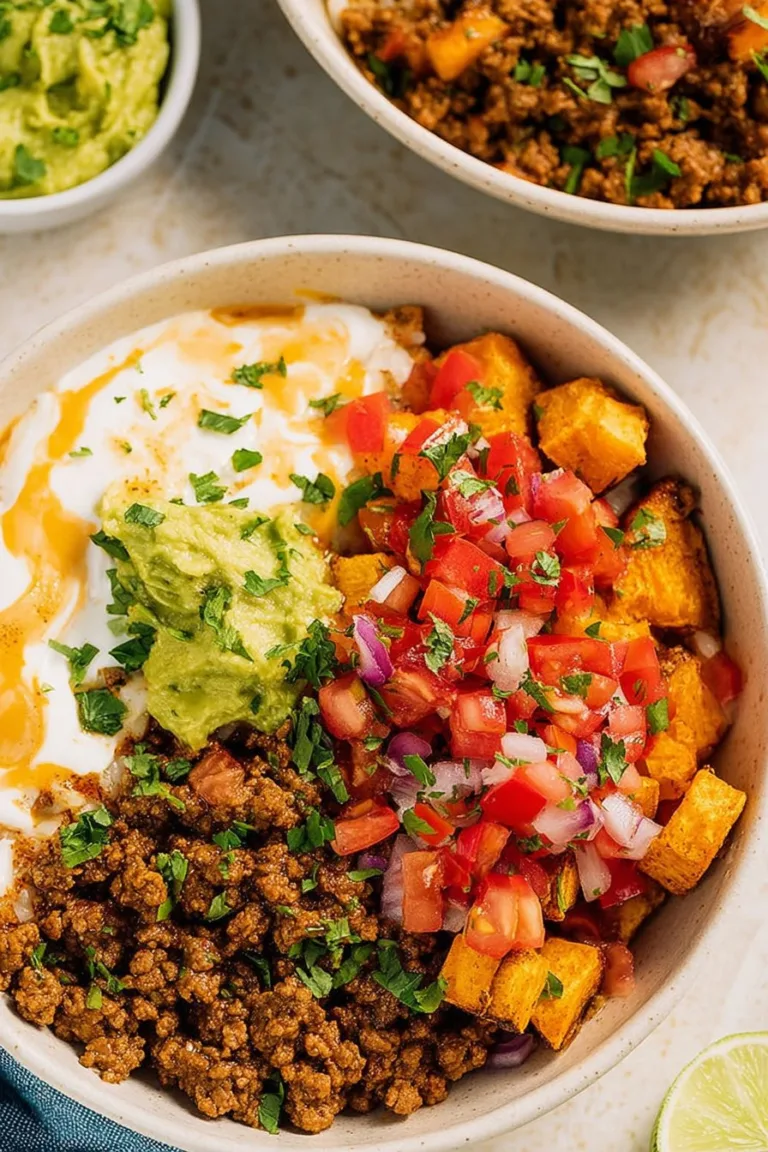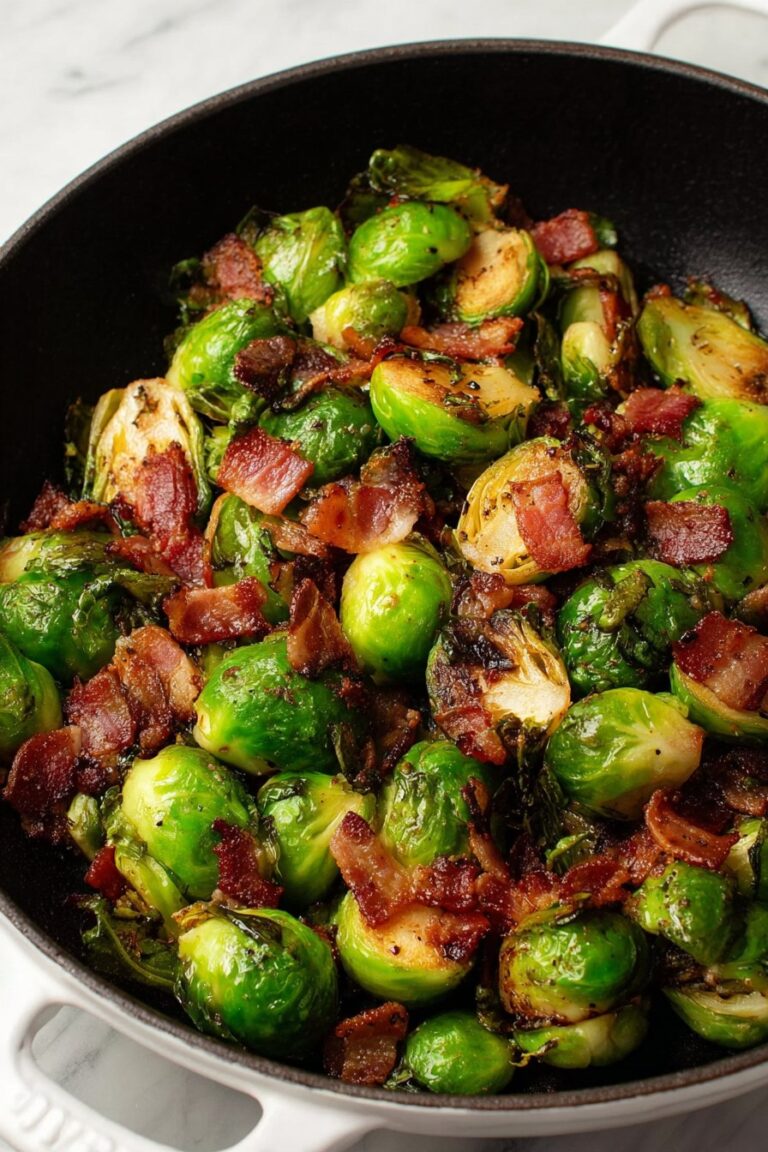Let Me Tell You About These Cold Noodles With Zucchini
I still remember the first time I made this—I’d just come back from the market with a bag full of zucchini, clueless what to do with them all. It was the kind of sticky-hot day you just want to eat something cold, you know? So I thought, “Why not throw them with some noodles and see what happens?” The first batch was… not great (I forgot to salt the zucchini, rookie mistake) but since then, it’s become my little summer ritual. And honestly, sometimes when I open the fridge and see all those leftovers, I just grab a fork and eat straight from the bowl—don’t judge.
Why You’ll Love This (Or Why My Family Does, Anyway)
I make this when I’m too tired to even look at the stove, or when it’s too hot to think about soup. My family goes a bit bonkers for it since it’s refreshing but still, like, real food. Plus, if you’re the kind of person who accidentally buys too much zucchini (guilty), it’s a lifesaver. Also, there’s no frying, and no oven—just a bit of chopping and mixing. Sometimes, the hardest part is not eating it all before it chills. (Patience isn’t always my strong suit!)
What You’ll Need (But Honestly, You Can Improvise)
- 200g dried noodles (I love soba, but spaghetti or even ramen noodles work if that’s what’s in the cupboard)
- 2 medium zucchinis, julienned (or grated if you’re in a rush—my granny swore by using a box grater, but I just use a knife)
- 1 small carrot, julienned (optional, but it looks so pretty)
- 2 spring onions, thinly sliced (or a handful of chives—sometimes I just use whatever’s growing outside)
- 3 tbsp soy sauce (I’ve used tamari too when cooking for gluten-free friends, works just fine)
- 1 tbsp rice vinegar (white wine vinegar’s okay in a pinch)
- 1 tsp toasted sesame oil (please don’t skip this, but if you must, olive oil just about works)
- 1 tsp sugar (or honey, or forget it entirely if you’re not feeling sweet)
- 1 garlic clove, minced (I use 2 because I love garlic, but that’s maybe too much for some)
- Chili flakes or a drizzle of chili oil (totally optional, but I like a little kick)
- Toasted sesame seeds, for topping (if you remember—sometimes I don’t!)
How I Actually Make It (Not Always By The Book)
- Start by cooking your noodles according to the package. Nothing fancy here—boil, stir, taste to check. Drain and rinse them with cold water, and don’t be shy about it. You want them cold, not lukewarm. (This is where I occasionally forget to set a timer and end up with mushy noodles. Still edible, just, you know, less perfect.)
- While the noodles are chilling, toss your zucchini (and carrot if using) with a little salt. Let it sit for 10-ish minutes. Sometimes I forget to drain the liquid but honestly, it’s not the end of the world; just squeeze them a bit and call it a day.
- Whisk together the soy sauce, vinegar, sesame oil, sugar, and garlic in a small bowl. Taste it—sometimes I add more vinegar if I’m feeling zesty. Or more soy sauce if I went too heavy on the noodles. It’s all pretty forgiving.
- Combine the noodles, zucchini, carrot, and spring onions in a big bowl. Pour the dressing over and give everything a good toss. This is where I usually sneak a taste (or two). Adjust if you want it saltier, tangier, whatever.
- Chill it in the fridge for at least 30 minutes. Or eat it right away if you can’t wait—I do that sometimes. Top with sesame seeds and chili oil if you like a little heat.
Some Notes I’ve Picked Up The Hard Way
- If you slice the zucchini too thick, it kind of takes over. Thin is better, but not paper-thin—unless you have a mandoline, which I don’t (too many accidents waiting to happen).
- Sometimes I use leftover noodles form last night’s dinner. On second thought, fresh is way better. But I get lazy, what can I say?
- If it tastes a bit bland, a squeeze of lemon perks it right up.
Experiments (Including My One Flop)
- Once I tried adding shredded chicken—not bad, but kind of defeated the point of a light, veggie dish.
- Cucumber works if you’re short on zucchini, but it gets a bit watery. Still, not a disaster.
- Peanut butter in the sauce sounded great, but it just got clumpy (maybe I’ll figure that out next time?)
- Oh, and I once threw in mint from the garden. Surprisingly fresh, but best in small doses!
Gear (And What To Do If You Don’t Have It)
All you really need is a pot for boiling noodles and a knife. If you don’t have a julienne peeler, just use a regular knife—no one’s judging. I saw someone use kitchen scissors once, which looked a bit madcap but actually worked fine. No mixing bowl? Use a big serving dish or even the pot you cooked the noodles in. I’m all for practical magic.
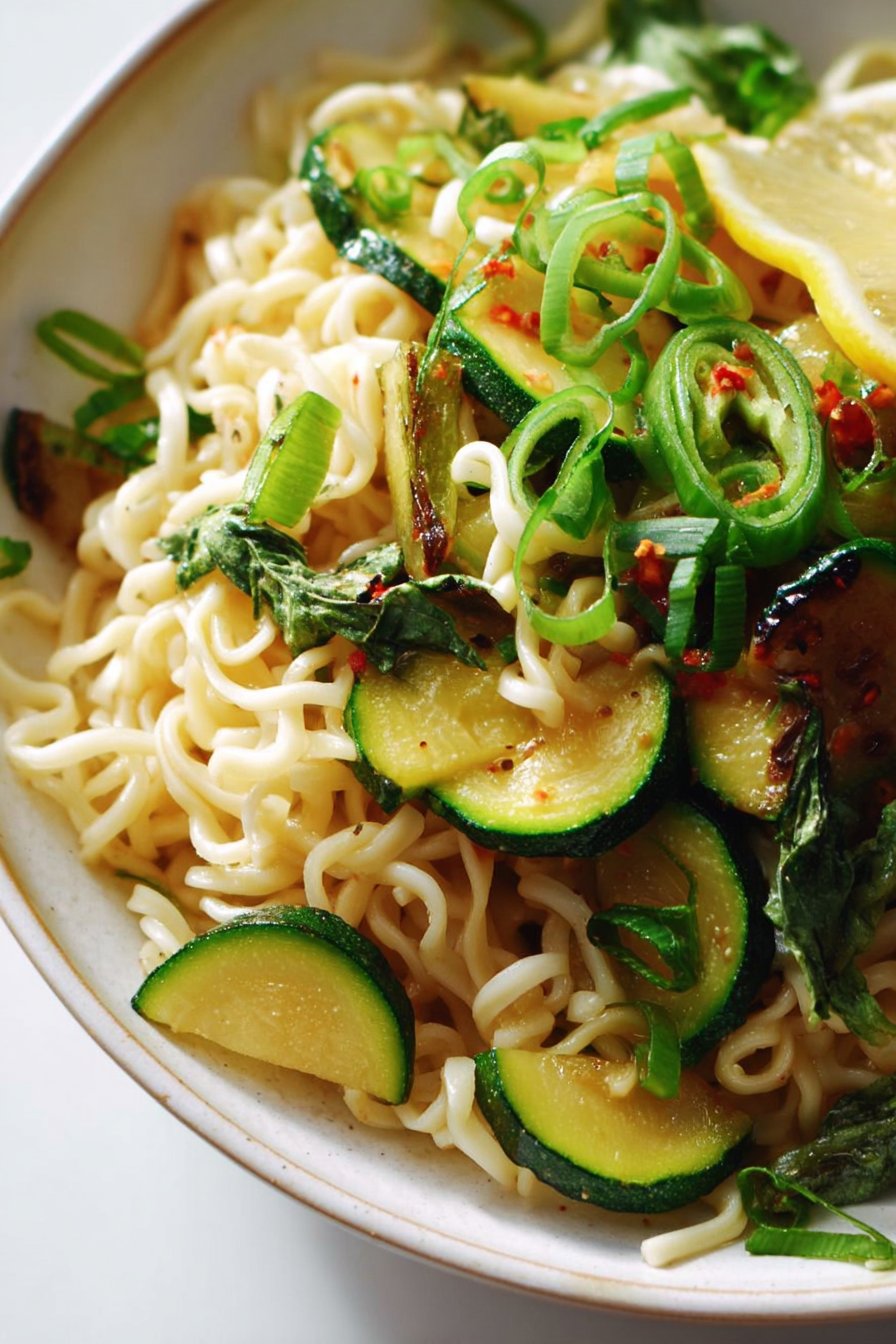
Storing Your Noodles (If You Have Any Left…)
Stick leftovers in an airtight container in the fridge. They’re good for a day or two, but honestly, in my house it never lasts more than a day! Actually, sometimes I think it tastes better after a night in the fridge, the flavors sort of mellow together.
How I Like To Serve This (And My Family’s Little Ritual)
I usually serve these cold noodles with a scatter of extra spring onions on top, sometimes with a poached egg if I’m feeling fancy. My partner likes theirs with an extra dash of soy sauce; the kids, just as it comes. We once tried it as a side for grilled salmon and, wow, that was a good call. Oh, and if you’re picnicking, pack it in a thermos—it keeps nicely chilled!
Lessons I’ve Learned (Sometimes The Hard Way)
- Don’t skip rinsing the noodles in cold water, or you’ll end up with a starchy clump. I once tried to shortcut that and, yeah, never again.
- Letting the veggies sit with salt really does make a difference. I used to ignore that step, but the texture is so much better if you do it.
- Taste as you go. I know everyone says it, but it’s true—especially with a dish this simple.
FAQs: Real Questions I’ve Actually Been Asked
- Can I use zucchini noodles (zoodles) instead of regular noodles? Sure! It’ll be even lighter. Just don’t let them sit too long in the dressing or they get a little soggy.
- What kind of noodles are best? Soba is my fave, but I’ve used those cheap ramen bricks (without the flavor packet, obviously) and it still works. Even linguine is OK in a pinch.
- Do you have to chill it? Nope, but I think it tastes way better after a half hour in the fridge. But if you’re hungry, just dig in.
- Can I make it ahead? Yup! Just keep the dressing separate and toss before serving if you want the veggies to stay snappy.
- Where did you learn this? It’s a bit of a mashup, honestly—some tips from cookbooks, some from YouTube videos (shoutout to Maangchi’s Korean cucumber salad for inspiration), and a lot from winging it.
- Can I add protein? Of course—leftover chicken, tofu, shrimp, whatever’s hanging about. Just don’t overload it or you lose the refreshing vibe, in my opinion.
- Any recommended kitchen gadgets? If you like tools, a mandoline is handy, but honestly, a sharp knife does the trick.
By the way, if you want to geek out on cold noodle recipes, Bon Appetit’s cold noodle with crispy shallots is also worth a look. But for me, this zucchini version is comfort in a bowl—unfussy, bright, and just a little bit different every time I make it.
Ingredients
- 250 g dried wheat noodles
- 2 medium zucchinis, julienned
- 1 medium carrot, julienned
- 2 green onions, thinly sliced
- 3 tbsp soy sauce
- 2 tbsp rice vinegar
- 1 tbsp toasted sesame oil
- 1 tbsp sesame seeds
- 1 tsp sugar
- 1 clove garlic, minced
Instructions
-
1Cook the wheat noodles according to package instructions. Drain and rinse under cold water to cool completely.
-
2In a large bowl, whisk together soy sauce, rice vinegar, sesame oil, sugar, and minced garlic to make the dressing.
-
3Add the cooled noodles, julienned zucchini, carrot, and green onions to the bowl with the dressing.
-
4Toss everything together until the noodles and vegetables are well coated with the dressing.
-
5Transfer to serving bowls and sprinkle with sesame seeds before serving.
Approximate Information for One Serving
Nutrition Disclaimers
Number of total servings shown is approximate. Actual number of servings will depend on your preferred portion sizes.
Nutritional values shown are general guidelines and reflect information for 1 serving using the ingredients listed, not including any optional ingredients. Actual macros may vary slightly depending on specific brands and types of ingredients used.
To determine the weight of one serving, prepare the recipe as instructed. Weigh the finished recipe, then divide the weight of the finished recipe (not including the weight of the container the food is in) by the desired number of servings. Result will be the weight of one serving.
Did you make this recipe?
Please consider Pinning it!!

